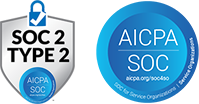What Is Data Mining?
Data Mining is the process of applying statistical, machine-learning, and visualization techniques to large datasets to uncover hidden patterns, trends, and relationships. In People Analytics, it translates raw HR data—such as performance scores, engagement surveys, and turnover records—into actionable insights that guide talent acquisition, retention, and development strategies.
Why Data Mining Matters
Organizations sit on vast amounts of workforce data yet struggle to extract value manually. Data Mining automates discovery of risk factors (e.g., flight-risk predictors), skill gaps, and high-performer traits—enabling HR teams to shift from reactive reporting to proactive, evidence-based talent decisions that drive engagement and performance.
Where Data Mining Is Used
- Attrition Prediction: Cluster employees by departure risk using tenure, engagement, and performance indicators.
- Recruitment Analytics: Score candidate fit by mining résumé keywords, past performance, and cultural-fit metrics.
- Learning & Development: Identify course effectiveness and recommend personalized learning paths via association rules.
- Performance Management: Detect outlier behaviors and correlate training interventions with productivity gains.
- Diversity & Inclusion: Uncover under-represented cohorts across levels and guide targeted inclusion programs.
Data Mining Key Benefits
- Predictive Power: Forecast turnover, high-potential hires, and skill-shortage hotspots before issues escalate.
- Efficiency Gains: Automate data exploration, freeing HR to focus on strategy rather than spreadsheet wrangling.
- Deeper Insights: Reveal non-obvious relationships—such as training completion driving cross-functional mobility.
- Personalization: Tailor talent programs (learning, rewards) based on individual or cohort profiles.
- Continuous Improvement: Monitor program impact over time to refine initiatives and maximize ROI.
Best Practices & Examples
- Data Preparation: Cleanse and normalize HRIS, ATS, and survey data to ensure quality inputs.
- Feature Selection: Prioritize variables with highest predictive value—such as engagement scores or certification counts.
- Model Validation: Use techniques like cross-validation and A/B testing to confirm discovered patterns.
- Explainability: Choose interpretable algorithms (e.g., decision trees) for transparency in HR decision support.
- Iterative Refinement: Continuously retrain models on new data—one retailer improved forecast accuracy by 18% after quarterly updates.
Conclusion
Data Mining transforms People Analytics from descriptive dashboards into predictive engines that anticipate workforce needs and guide strategic talent interventions. By harnessing advanced algorithms and robust data-governance, organizations unlock deeper insights, drive proactive decision-making, and sustain competitive advantage through their people.
Data Mining FAQs
Q: What do you mean by data mining?
Data Mining is the automated analysis of large datasets to discover meaningful patterns and relationships, using techniques like clustering, classification, and association rule mining, which support predictive and prescriptive insights in business and HR contexts.
Q: What are the 4 types of data mining?
The four core types are:
- Classification: Assigning data into predefined categories.
- Clustering: Grouping similar records without pre-existing labels.
- Association: Discovering rules that describe co-occurrence of items.
- Regression: Predicting continuous numeric outcomes based on input variables.
Q: What are the 4 stages of data mining?
Data Mining typically follows:
- Data Collection & Preparation: Gathering and cleaning data.
- Exploratory Analysis: Visualizing and summarizing patterns.
- Model Building: Applying algorithms (e.g., decision trees, k-means).
- Deployment & Monitoring: Integrating models into workflows and tracking performance.
Q: What are the 7 steps of data mining?
Seven standard steps are:
- Business Understanding
- Data Understanding
- Data Preparation
- Modeling
- Evaluation
- Deployment
- Monitoring & Maintenance
This CRISP-DM framework ensures alignment with strategic goals and continuous improvement.




